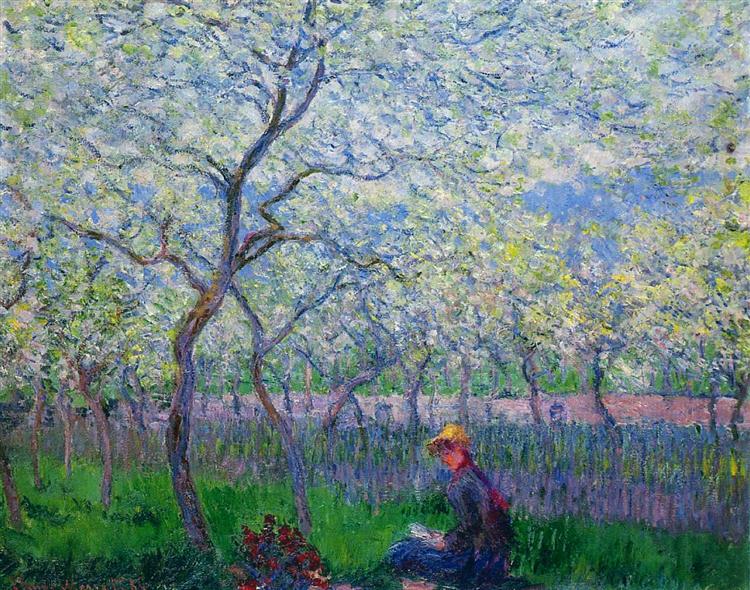Description
In "A spring garden" of 1886, Claude Monet offers us a vibrant and delicate representation of nature in full rebirth. This work, which is part of the impressionist movement, reveals the artist's mastery in the capture of light and color, elements that are fundamental in their work. Monet, throughout his career, dedicated himself to studying light variations and seasonal transformations, and this painting is a clear example of that search.
The composition of the work is both simple and complex. Monet presents us with a flourishing garden, where flower trees are the protagonists. The perspective is built in such a way that the viewer feels immersed in this spring scenario. Tree trunks rise to heaven while branches extend organically, creating a feeling of depth and three -dimensionality. In the distance, you can see soft hills that add a mountain contrast to the rural environment, benefiting the feeling of openness and freedom on the scene.
The use of color is particularly notable in this work. Monet uses a palette that reflects the fresh and luminous tones of spring, combining soft pink, white and green. The whites of the flowers contrast with the intense green of foliage, creating an almost ethereal effect that arouses the sensation of fragility and beauty of nature in this station. The technique of loose and fluid brushstrokes, characteristic of impressionism, allows light to seem to dance on the surfaces, providing the work of an almost vibrant quality. Through these loose brushstrokes, Monet manages to capture the movement of air in the garden, evoking an atmosphere of renewal and joy.
In it painting There are no visible human figures that distract from the essence of nature, which allows the viewer to focus completely on the beauty of the garden. This human emptiness suggests a kind of contemplation and invites the observer to get lost in the tranquility of the landscape. In the context of the Impressionist era, this choice of Monet aligns with the philosophy of movement, which sought to explore the ephemeral and immediate, above complex narratives or subordinate figures.
Interestingly, "A garden in spring" is contemporary to other Monet works that also reflect their interest in the gardens and rurality. Monet dedicated much of his time to paint the gardens in Giverny, where he cultivated flowers and plants that later became the protagonists of his art. The connection that the artist felt with nature is palpable in this piece, and can be seen as a prelude to the works that would later characterize it, such as its famous water lilies.
Through this painting, Monet not only captures a time in time, but also invites us to reflect on the relationship of the human being with the ephemeral nature that it offers. "A garden in spring" is a celebration of life and light, and a testimony of the transforming power of art that can evoke sensations through color and shape, being, in effect, a classic that continues to resonate strongly into the Impressionist legacy.
KUADROS ©, a famous paint on your wall.
Hand-made oil painting reproductions, with the quality of professional artists and the distinctive seal of KUADROS ©.
Reproduction service paintings With a guarantee of satisfaction. If you are not completely satisfied with the replica of your painting, we refund your money 100%.

